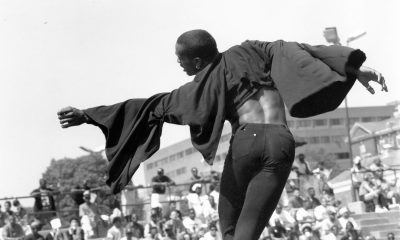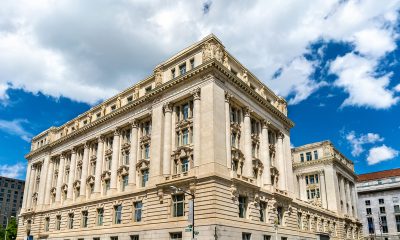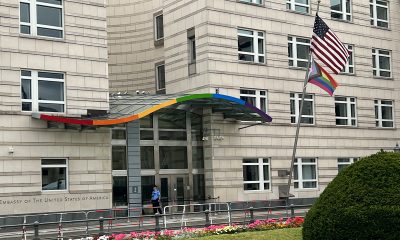a&e features
2021 Queer Women of Washington
Celebrating voices of change in D.C.
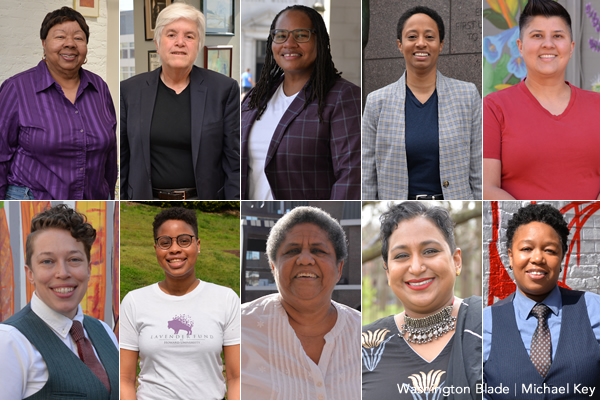
The Washington Blade, in partnership with the Mayor’s Office of LGBTQ Affairs and the Office of Women’s Policies and Initiatives, is proud to present our annual Queer Women of Washington.
Here we celebrate some of the city’s many inspiring queer women who are the voices of change from a diverse group of industries. Nominations came from our readers; that list was then trimmed to the queer women profiled here.
Rewatch the Queer Women of Washington Awards presented by DC Department of Health HERE.
Meg Metcalf
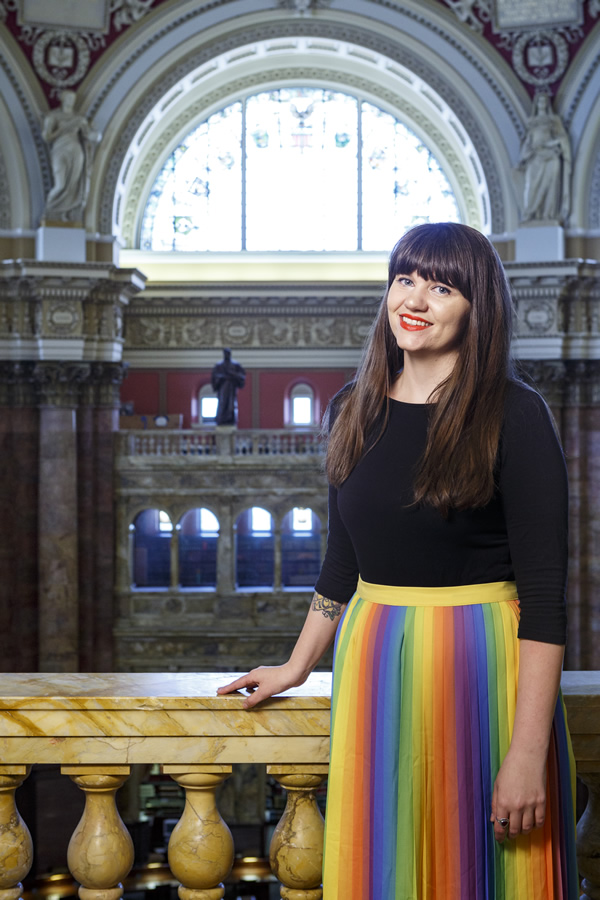
Occupation: Library of Congress (Librarian & Collection Specialist, Women’s, Gender, & LGBTQIA+ Studies)
Where do you live? Ward 5
What does being a queer woman in Washington, D.C. mean to you?
Being a non-binary queer femme in Washington, D.C. has given me an unparalleled opportunity to influence the way cultural memory institutions document and remember LGBTQIA+ life, history, and cultures in our nation’s capital and beyond. What happens in D.C. resonates nationally and globally, so it’s a wonderful place to live and work as a librarian, activist and advocate.
Michele Zavos
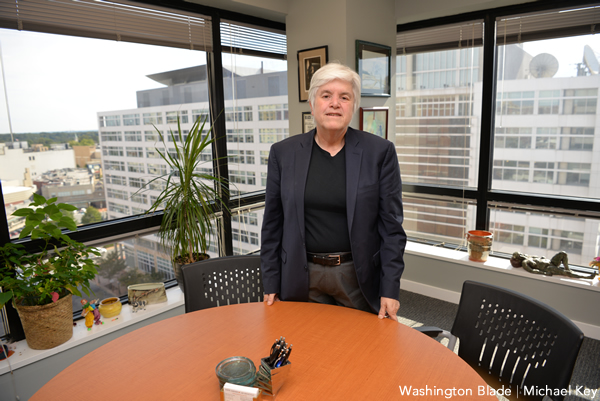
Occupation: Zavos Law
Where do you live? Ward 5
What does being a queer woman in Washington, D.C. mean to you?
I identify as a lesbian, as I have my entire adult life. That identification to me means a certain way of looking at the world, as a woman who loves and prioritizes women.
D Magrini
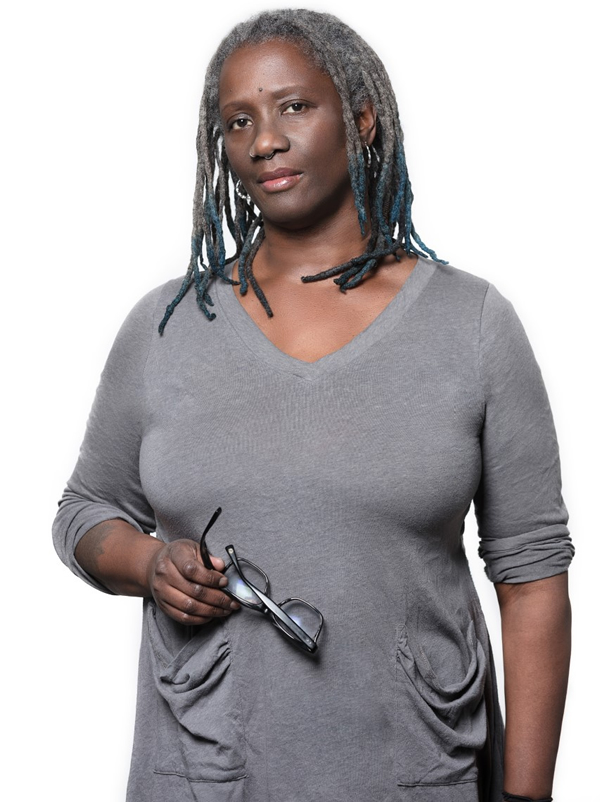
Occupation: Whitman-Walker Health
Where do you live? Ward 3
What does being a queer woman in Washington, D.C. mean to you?
A native Washingtonian proudly being myself.
Yvette Scorse

Occupation: Communications Director, ByteBack
Where do you live? Ward 6
What does being a queer woman in Washington, D.C. mean to you?
Being a queer woman in Washington, D.C. is about more than embracing and enjoying my own identity and love openly. It’s about celebrating other LGBTQ+ people, about nurturing a safe and welcoming environment for my colleagues, and it’s about putting equity and inclusion first in our community. I’m proud to be among a group of diverse, strong, creative, inspiring queer women in D.C.
Tiera Craig
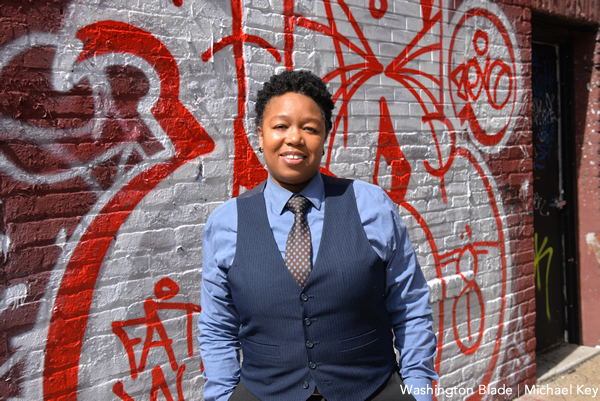
Occupation: The DC Center
Where do you live? Ward 3
What does being a queer woman in Washington, D.C. mean to you?
I am a proud Black combat service disabled veteran lesbian professional committed to the LGBTQ community and passionate about All Things Lesbian. I strive to represent, educate, encourage, and empower members of the community in any way necessary. Being a queer woman in Washington, D.C. means that I have a greater opportunity to affect change on a micro and a macro level. It means that I am in a position to have my finger on the pulse of transformation in policy. It also means that I am a part of the dopest community in the country!
Sunu P. Chandy
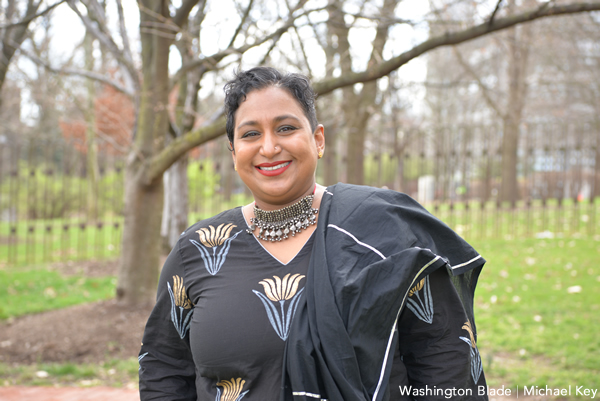
Occupation: Legal Director, National Women’s Law Center
Where do you live? Ward 3
What does being a queer woman in Washington, D.C. mean to you?
While we are lucky to be queer women in D.C. given all of our local legal protections for LGBTQ individuals, we also need to push the U.S. Senate to pass the Equality Act so that our rights in this country don’t depend on our zip code. We also need to keep organizing and advocating for social justice across the areas of our lives here in D.C. too. I am excited to keep building, alongside so many terrific comrades, toward gender justice, racial justice, disability justice, immigration justice and more.
Cee Smith

Occupation: Color Wheel Capital
Where do you live? Ward 5
What does being a queer woman in Washington, D.C. mean to you?
Being a queer woman in D.C. means that I’m a part of a small but mighty percentage of the population that’s known to overcome despite the disparities. It means working daily to advance a community I believe in.
Heidi Ellis
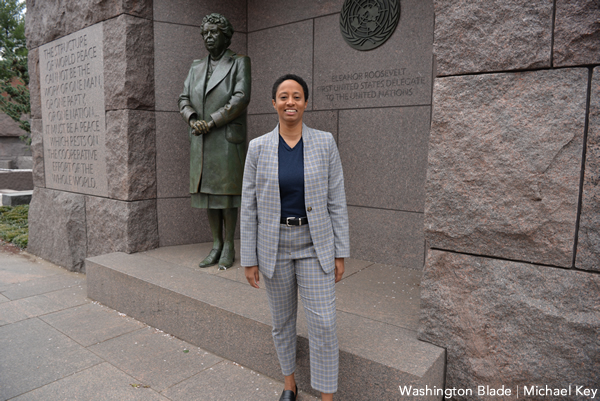
Occupation: Founder, HME Consulting & Advocacy
Where do you live? Ward 6
What does being a queer woman in Washington, D.C. mean to you?
My identity has always been my compass as I’ve navigated different spaces throughout my upbringing, education, and career. For me, it’s not about only being a woman, or queer, or Black, or Latinx. I am all of those things. The experiences I have occupying space as a woman with an intersectional lens dictate my priorities when allocating some of my most precious resources, including time, money, and my mental capacity. I am dedicated to building coalitions and improving systems that will ultimately lead to liberation for the most marginalized members of our community. I feel inspired living in Washington, D.C., as we are uniquely able to see the progress, and sadly the failures, of our government and the power structure. Local culture and history also inspire me. D.C. is a treasure trove of historical events and stories that influence our community, and I hope to continue learning while adding to the rich history.
Charlotte Cleveland
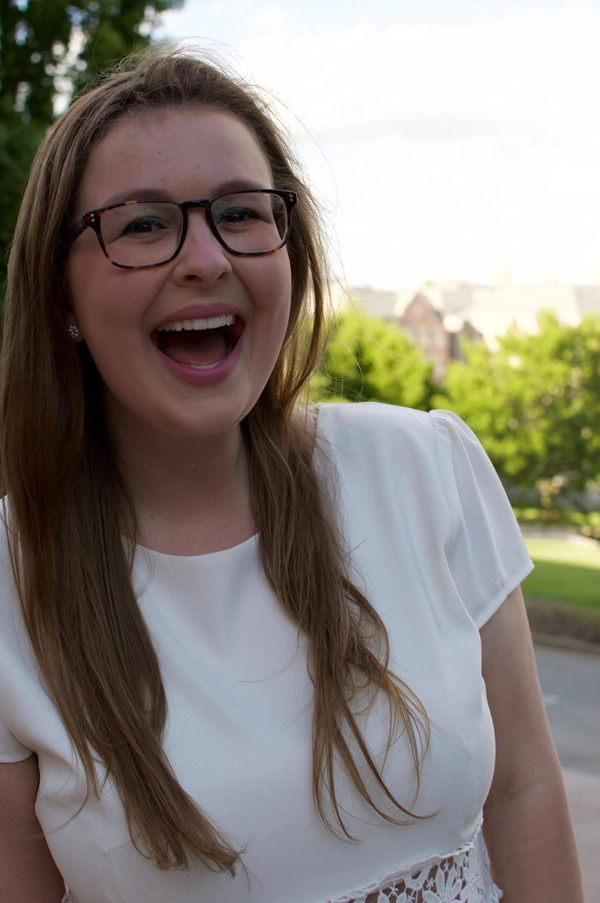
Occupation: American College of Surgeons
Where do you live? DMV Area
What does being a queer woman in Washington, D.C. mean to you?
Being a queer woman in Washington, D.C. means being a part of a profoundly embracive, proud, diverse, and welcoming community. By nature, it means I get to be both national and local. We live at the epicenter of American politics, which can be an ugly and treacherous space to exist as a queer person and we see the progress, and failures, of our government in real-time. This allows me to use my voice and uplift the voices of others to advocate for change. On the local level, D.C. is one of the queerest cities in America and I can unabashedly be my queer self every day.
Morgan Butler
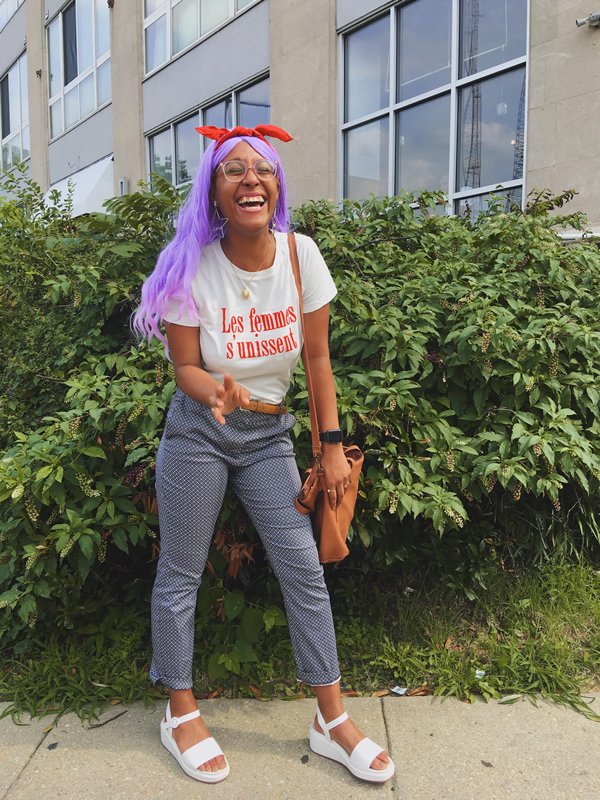
Occupation: Public Allies DC
Where do you live? Ward 4
What does being a queer woman in Washington, D.C. mean to you?
So much of my gender identity, sexuality and spirit has been nurtured and influenced by D.C. As a gender fluid femme queer, it’s been important for me to acknowledge all my selves, to care for them, to inspire them, to reparent them and heal them from childhood wounds. D.C. has been the safest place for me to reparent myself — this city has provided me and (with extreme reverence) allowed me to provide platforms and opportunities for others to experience the beautiful, whimsical, magical, intense heat that quite honestly, no other city has. The way D.C. is continuously birthing renaissance astounds me every moment of every day. The way this city breeds and nurtures talent is something I intentionally try to emulate in every space I’m welcomed in outside of the city. My work is so intrinsically connected to this city, in the same ways that my person and my spirit is.
Aditi Dussault
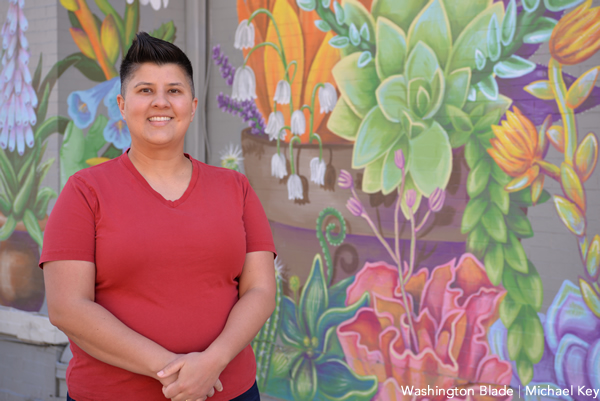
Occupation: Co-Founder & Director, GovContractPros, LLC
Where do you live? Ward 1
What does being a queer woman in Washington, D.C. mean to you?
I first moved to D.C. to attend college – a somewhat typical story of “finding myself” in a new place. My favorite part of being queer in D.C. is not only have I found myself, but also I have found so many amazing people who are so different from me. In finding and exploring differences, I have found incredible threads of commonality and I think D.C. is particularly unique city for bringing it all together.
Melissa DeShields
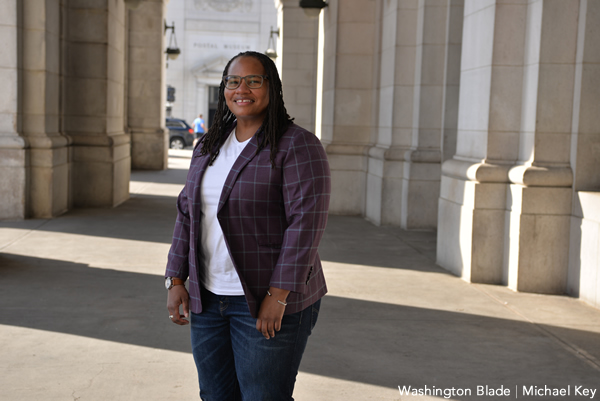
Occupation: CEO, Frontline Solutions
Where do you live? Ward 4
What does being a queer woman in Washington, D.C. mean to you?
Being a Black queer woman in Washington, D.C. means that I live in the intersection of race and identity. My work, my politics, my life is about justice and dismantling systems of oppression.
Ashley Carothers
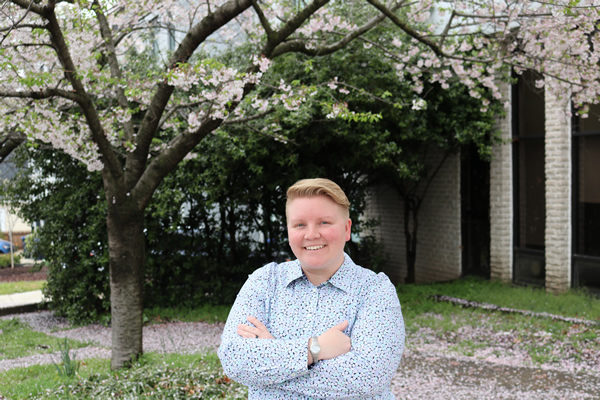
Occupation: Minority Veterans of America
Where do you live? Ward 5
What does being a queer woman in Washington, D.C. mean to you?
Being a queer woman in D.C., our nation’s capital gives me the opportunity to mentor folks not just within our LGBTQ+ community but those outside of our community. I’m able to have conversations with people from all spectrums, change hearts and minds. I’m also able to open the door for the voiceless so that they can be seen and heard in the room. I’m able to cross lines and push boundaries so those coming behind me are able to live more as their true selves.
Olivia O’Neal
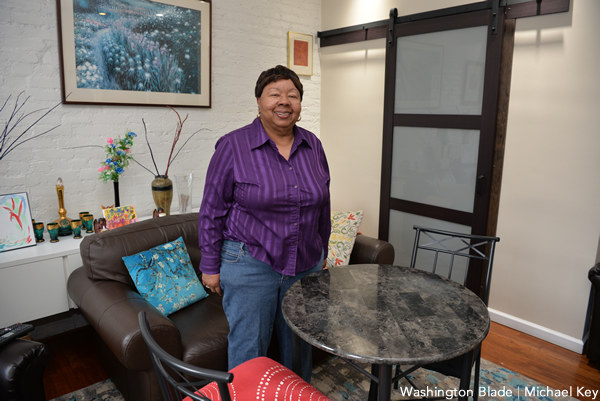
Occupation: IONA, WWH, Mary’s House for Older Adults, DACL, Seabury Resources for Aging
Where do you live? Ward 6
What does being a queer woman in Washington, D.C. mean to you?
Being a queer woman in D.C. means that I can advocate for all women’s rights no matter what their sexual orientation may be.
Jade Flower
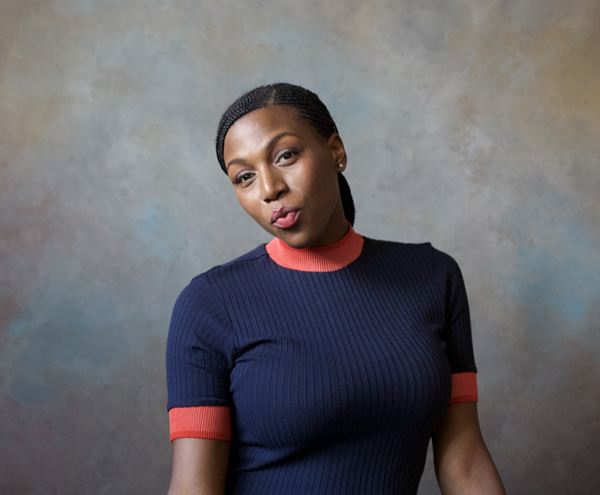
Where do you live? Ward 7
What does being a queer woman in Washington, D.C. mean to you?
Being a queer woman in D.C. means being a part of rich legacy — generations of Black lesbians in Washington have made this city a safe, inclusive and celebratory place. I grew up here, had my first kiss on a front porch off Nannie Helen. My first Pride (before I was out), I wore a different rainbow color every day of the week. My first party experiences were at the Edge and the Delta. My first time on a board was with Women in the Life Association. I screened my first film at HRC headquarters. I hope to continue to honor a tradition of so much self-love that it effortlessly pours into the LGBT community and allies alike.
Adalphie Johnson Wilhite
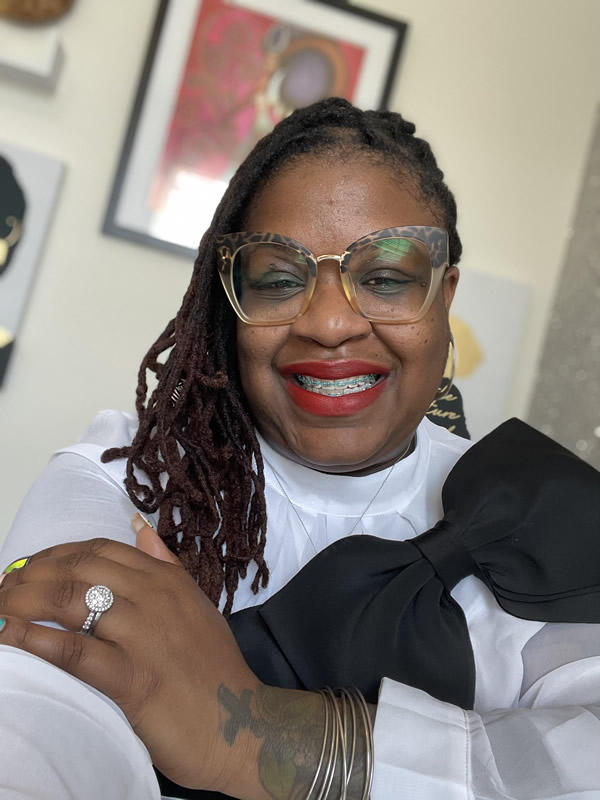
Occupation: SMYAL – Programs Director, The Community Church of Washington DC UCC – Assist. Pastor, Mx. Boss Lady Enterprises – Founder/Consultant
Where do you live? Ward 8
What does being a queer woman in Washington, D.C. mean to you?
Being a Queer Womxn in the DMV to me means, having the knowledge, courage, and ability to be and create agents of change in the community in all of my queerness. As a Black, queer woman, mother, wife, leader, and pastor I recognize many spaces are not affirming of my identities. In knowing that, it is my responsibility to be unapologetic about my identities while speaking truth to power and empowering others to live in their authentic truth. Being a queer womxn means penetrating spaces, and holding leadership positions that historically have been held by male-identified persons while also carving spaces of our own. It is our responsibility to be visible in responding to the injustices that plague our communities in an effort to build a better present and future. Being a Queer Womxn in the DMV means to be proud, passionate, caring, unapologetic, fierce, and in the words of the beloved Audrey Lorde, deliberate and afraid of nothing.
Alexis Grady
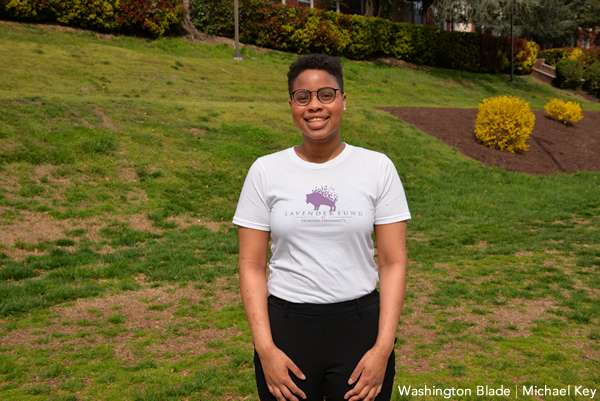
Occupation: Law Student
What does being a queer woman in Washington, D.C. mean to you?
Being a queer non-binary person in Washington, D.C. has been an incredible and enlightening experience. The protections and opportunities afforded to me as a queer person in this city have allowed me to live more openly than I ever anticipated, and to be a fierce advocate for people in the LGBTQ community. From interning with the Victory Institute to serving as the president of Howard University’s CASCADE, my interactions with our community here have been overwhelmingly meaningful and positive. The protections and support for queer people, particularly women and non-binary people of color, are a large part of the reason I have chosen to make Washington, D.C. my permanent home. I am so grateful to be considered among the women and queer people who have made it possible for me to survive and thrive. Being a queer non-binary person in Washington, D.C. means being a step closer to freedom and being wrapped in the support of my community at all times.
Elizabeth Birch
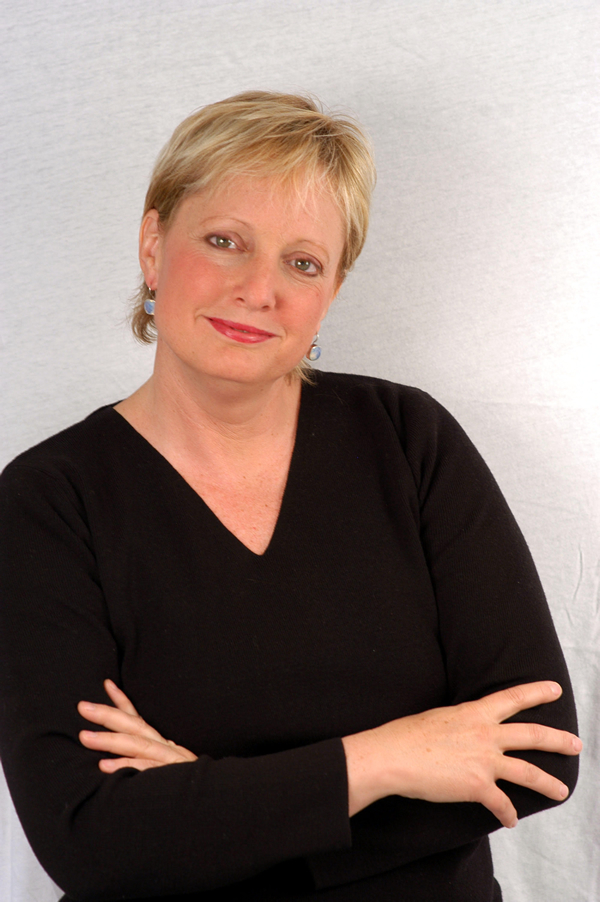
Occupation: VP CBRE and CEO Elizabeth Birch Company
What does being a queer woman in Washington, D.C. mean to you?
Being a lesbian or anyone on the LGBTQ spectrum in Washington, D.C. is a gift. It gives you a perspective on humanity that might elude you in a purely straight world.
Yvonne Z. Smith
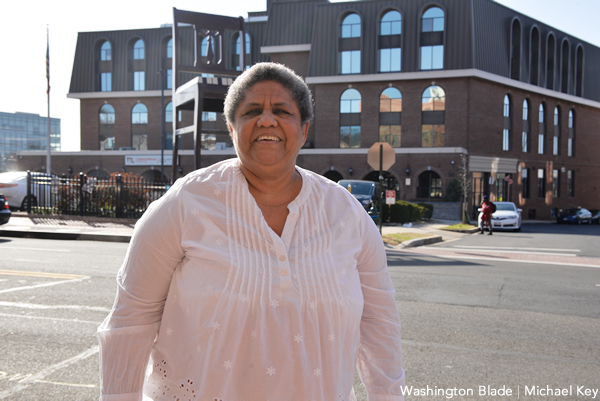
Occupation: Disability and Mental Health Advocate
What does being a queer woman in Washington, D.C. mean to you?
Being an out queer woman in D.C. allows me a amount of personal and emotional freedom. Although it’s been decades since I opened those closet doors it’s still refreshing not to be anything other than who I am. The Washington region is best place to work or play for any age of queer women. Although it still has some significant challenges that I work on through many LGBT organizations as well as disability organizations in the city I have never had to hide who I am or not advocate for all segments of the community I am a part of, including the Queer community.
Kisha Allure
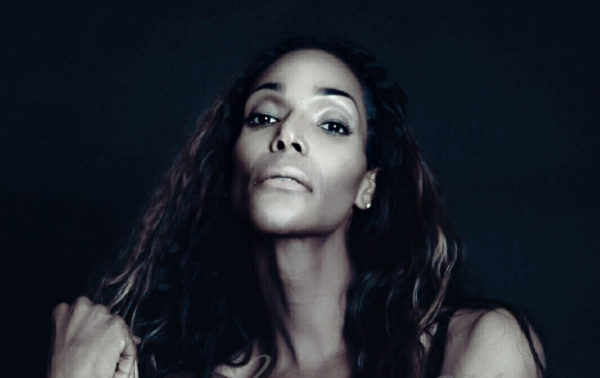
Occupation: Director of Victim Services/Resilient Development, Casa Ruby
What does being a queer woman in Washington, D.C. mean to you?
As a Queer woman, I have been classified as the unexplained subject of a marginalized population. However, As Queer Woman I will continue to stand in my truth. Living the way I feel, from the inside out. I will walk, work, and experience equal opportunity as every human being. I will continue to bridge the gaps and create systems of tangible resources, for all genders to access, which is the biggest barrier in the LGBTQ community.
a&e features
Have yourself a merry John Waters Christmas
Annual holiday show returns to Alexandria and Baltimore
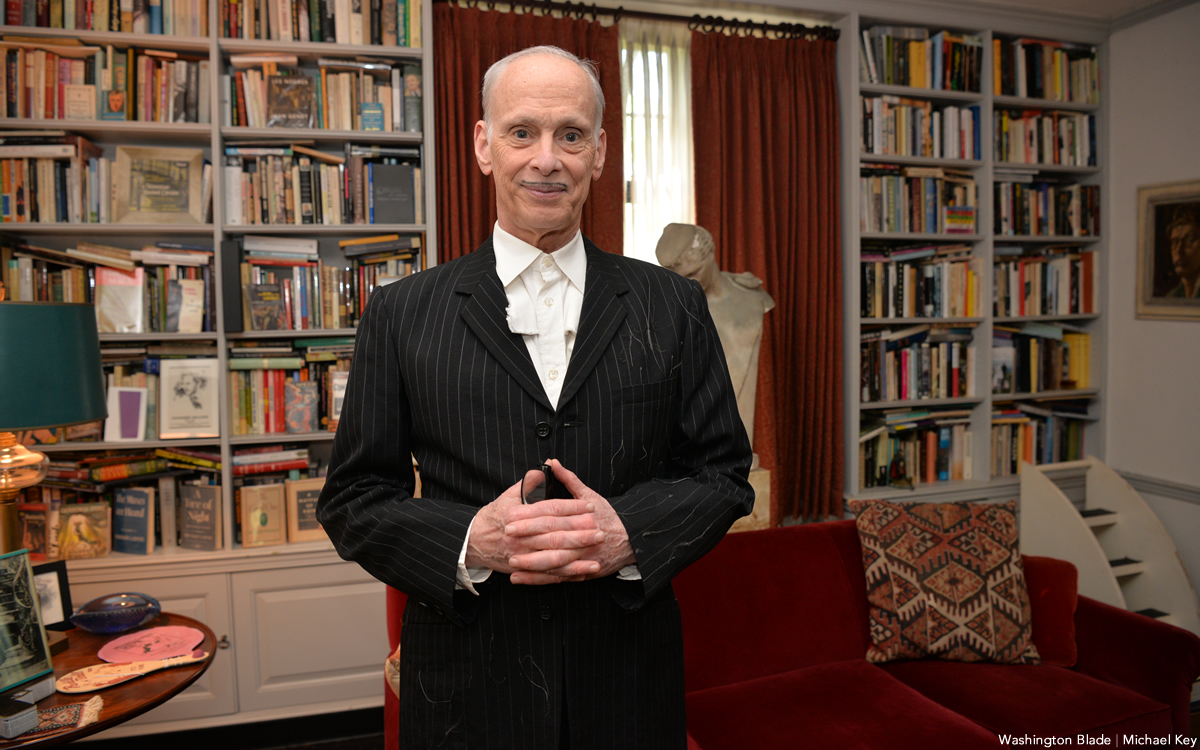
When it comes to iconic Christmas scenes in movies, none can top the tree-toppling tantrum thrown by cha-cha heels-deprived Dawn Davenport in John Waters’s fifth full-length feature “Female Trouble” from 1974. Therefore, it’s not surprising that Waters continues to make art out of Christmas, performing his spoken word Christmas tour in cities across the country. Waters has even more reason to celebrate with the release of his new red vinyl 7” single, a cover of Little Cindy’s “Happy Birthday Jesus (A Child’s Prayer)” on the A-side, and “A Pig Latin Visit From St. Nicholas” on the B-side. If you’re still looking for unique Christmas gifts, consider this record. As always, John was kind enough to make time for an interview in advance of his tour dates.
BLADE: John, in preparation for this interview with you, I went back and listened to Little Cindy’s original rendition of “Happy Birthday Jesus (A Child’s Prayer)” on your “A John Waters Christmas” CD.
JOHN WATERS: One thing I did, if you notice, I make the same stumble in my recording that she did in the original.
BLADE: It sounded to me like she got choked up.
WATERS: No, I think she just stumbles over a word, so I stumbled over the same word. It’s appropriation, insanely.
BLADE: Is this a song you first became aware of in your youth or when you were an adult?
WATERS: When I was doing the Christmas album, I had this friend named Larry Benicewicz. He was kind of my idea man with music. He knew every single old record. I would say to him, “Weird Christmas songs,” when we were doing a soundtrack, or a song about bears, or a song about this, and he would give me all these tapes. It was one of the ones he played for me. A lot of the songs I put in my movies and on my records, I did know as a kid. I did not know this one, but I immediately embraced it. I don’t think it’s campy. I think it really is spiritual in a weird way. My doing it makes it a novelty record. I am really for novelty records, and there aren’t any anymore. Why was there not a COVID novelty record? That’s insane. The dance “The Bug” that’s on the “Hairspray” soundtrack would be perfect for COVID.
BLADE: The thing that struck me was that for a Christmas song in the voice of a child, a kind of death pall hangs over it, with lines like, “If I was good you’d let me live with you” and “they nailed you to the cross, they wanted you to die.”
WATERS: All of it! When I see children at midnight mass kneeling in front of a nude man nailed to a cross, I feel like I’m at The Eagle! It is S&M, it’s creepy. I took the same cover (photo) from her record to parody and put my face on it. The same thing I did with The Singing Dogs last year when I covered (their version of) “Jingle Bells.” I’m really into novelty records. I love them and I’m trying to bring them back. I don’t expect anybody to ever play these records. Even The Singing Dogs one said on it, “Please do not play this record” [laughs]. And the flipside, the Pig Latin version, is almost impossible to listen to.
BLADE: I’m so glad you mentioned that. “A Pig Latin Visit From St. Nicholas” reminded me of the lost art of speaking in Pig Latin. I also recall watching the PBS series “Zoom” as an adolescent and learning to speak “ubbi dubbi,” a distant relative of Pig Latin. Do you think that the time is right for a Pig Latin or ubbi dubbi revival?
WATERS: Here’s the thing, I never could pick up any language, except Pig Latin. I’ve been in every foreign country. Foreign countries have given me money to learn to speak the language. I can never do it! But Pig Latin…my parents and other parents in the ‘50s spoke Pig Latin so kids couldn’t understand what they were saying. Then my mother taught it to me, and I used it. The hardest take to shoot in “Pink Flamingos” was not eating the dog shit. It was when the cast skipped, in one take, saying “E-way, are-yay e-they ilthiest-fay eople-pay in-hay e-they ole-hay ide-way orld-way.” We’re the filthiest people in the whole wide world in Pig Latin. We had to do so many takes so they could do it once without screwing it up. In “Polyester,” Edith (Massey) answers the phone, “ello-hay.” I did a photo piece where it was all subtitled in Pig Latin. Like “osebud-Ray” (from “Citizen Kane”) or in “Streetcar,” “ella-Stay!” [Laughs] All the iconic dialogue translated into Pig Latin. My assistant who helped me do it, had never heard of Pig Latin. She really got good at it because she lived in many foreign countries and can pick up languages. But it’s not that easy to do it correctly and read it. Your computer will translate into Pig Latin.
BLADE: AI understands Pig Latin?
WATERS: I guess that’s AI. It wasn’t 100% right, but it was close. I can speak it if I look at it, but just do a bit at a time. It was a challenge that no one would possibly care about or want to do.
BLADE: I think you pulled it off very well.
WATERS: If you want people to leave on Christmas morning, you put it on. That’s how you get your guests to leave. It’s time to go.
BLADE: Ood-gay i-bay! How did your relationship with record label Sub Pop, which released 2021, 2022, 2024, and new 2025 holiday singles, come about?
WATERS: I believe the first thing I did for them was “Prayer to Pasolini.” They came to me through Ian Brennan. He’s won a couple Grammys for World Music, but he is also is one of my agents who does the Christmas tour and a lot of my shows, anything with music. He helped me arrange each one of the songs. He had a relationship with Sub Pop. It was perfect. My friends in Baltimore, (the band) Beach House, have had huge success.
BLADE: That’s right, they’re on Sub Pop!
WATERS: Yes! I’m happy to be on it. I’ve even been to the warehouse and posed for pictures like Jackie Suzanne used to do.
BLADE: Is there any chance that “A John Waters Christmas” might be reissued on vinyl by Sub Pop?
WATERS: No. It’s such a nightmare to get the rights and to renew them. You have to find the publisher and the writer, and they usually hate each other. It doesn’t matter if it’s obscure or famous, it’s hard to get. You have to make the deal. The singer doesn’t get anything unless they play it on the radio. It would be so complicated legally, and there would be such a [laughs] tiny audience for it. I hope it will come out again. The same thing with the one for Valentine’s Day. I had two of them that did quite well when they came out; “A Date With John Waters and “A John Waters Christmas.” The “John Waters Christmas” album is still the soundtrack that plays whenever I’m doing my spoken word Christmas show as people are entering the theater.
BLADE: Aside from your annual Christmas show tour, what else do you do for the holidays now, and are there any traditions that you’ve carried over from your family?
WATERS: Certainly! I have two sisters, my brother’s widow, and me, so there are four and we take turns each year to have the Christmas dinner. Mine was last year. An entire sit-down dinner. Mom’s China, the silverware, the entire full dinner. It’s pretty traditional. I don’t have a Christmas tree, but I do decorate the electric chair from “Female Trouble.” That is a tradition in my family. We do have Christmas decorations, but they’re usually weird ones that fans sent me. I have one with Divine knocking over the Christmas tree, and the Christmas tree lights up, all sorts of amazing things. There is definitely a tradition here that might be a little altered, but it is definitely a tradition. I used to have a giant party every year, but COVID ended that. I still wouldn’t want 200 people in my house breathing right now.
BLADE: I was looking at your tour schedule and wondered if there are any new cities in which you’ve never performed the John Waters Christmas show that have been added to this year’s schedule?
WATERS: I don’t think there’s a city in America in which I haven’t done one show! The only places I haven’t been to are Hawaii and Alaska. I could do it there, but it’s too long on a tour. I can’t think of a city I haven’t played in in America over the last 50 years. The Christmas show is completely different every year. It doesn’t matter if you saw it last year.

Some gifts scream practical, others whisper luxury, and a few flat-out blur the lines. From cocoa that feels ceremonial to a cologne that linger like a suggestive smirk, this year’s ultimate gift picks prove that thoughtful (and occasionally naughty) presents don’t have to be prosaic. Welcome to your holiday cheat sheet for festive tangibles that get noticed, remembered, and maybe even result in a peck of gratitude planted under the mistletoe. Consensually, of course.
Amber Glass Champagne Flutes
Pop the champs – but make it vintage. These tulip-shaped stunners in amber-tinted glass bring all the Gatsby vibes without the Jazz-age drama. Whether you’re toasting a milestone or celebrating a Tuesday, their seven-ounce capacities and hand-wash-only care make ‘em as practical as they are pretty. Pair with a thoughtful bottle of bubs and gift with a glittering wink. $18, NantucketLooms.com
Disaster Playbook by Here Comes the Apocalypse
Because the end of the world shouldn’t be a solo act, this spiral-bound guide is your step-by-step roadmap to surviving and thriving when everything else goes sideways, which might be sooner than you think. Packed with checklists, drills, and a healthy dose of humor, it’s like a survival manual written by your most prepared (and slightly snarky) friend. Whether you’re prepping for a zombie apocalypse or, more realistically, REVOLUTION!, this playbook’s got your back. $40, HereComesTheApocalypse.com
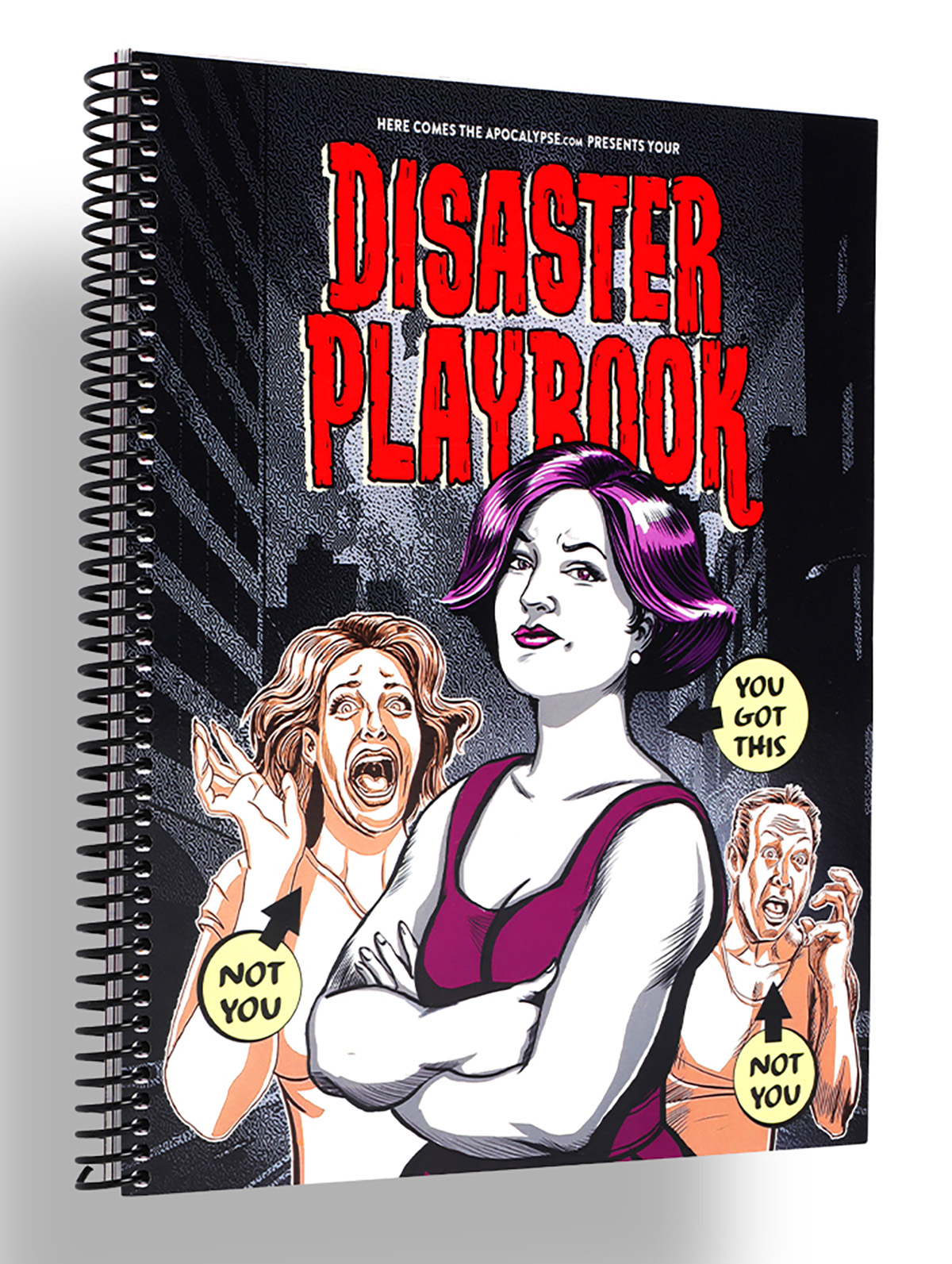
Wickless Vulva Candles
Bold, luxurious, and completely flame-free, CTOAN’s wickless candles melt from beneath on a warmer, releasing subtle, sophisticated fragrances, like sandalwood or lavender. The vulva-shaped wax adds a playful, provocative element to any space –perfect for a bedroom, living room, or anywhere you want elegance with an edge. A gift that celebrates form, intimacy and self-expression, no fire required. $39, CTOANCO.com
Villeroy & Boch Royal Classic Christmas Collection
Every meal is a mini celebration – with whimsy at every place setting – in Villeroy & Boch’s Royal Classic festive dinnerware collection that hits all the right notes. Made from premium German porcelain, it features nostalgic little toys, nutcrackers, and rocking horses in delicate relief, giving your holiday spread a playful but refined twist. Dishwasher- and microwave-safe, it’s luxe without the fuss. Gift a piece to a special someone, or start a collection they’ll use (and show off) for years to come. $22-$363, Villeroy-Boch.com
Greenworks Electric Lawnmower
You a ’hood queen who considers lawn care performance art – or just wants to rule the cul-de-sac in quiet, emission-free glory? Greenworks’ zero-turn electric mower has the muscle of a 24-horsepower gas engine but none of the fumes, drama or maintenance. Six 60V batteries and a 42-inch deck mean you can mow up to two-and-a-half acres on a single charge – then plug in, recharge, and ride again. It’s whisper-quiet, slope-ready, and smooth enough to make you wonder why you ever pushed anything besides your queer agenda. The perfect gift for the homeowner who loves sustainability, symmetry, and showing off their freshly striped yard like that fresh fade you get on Fridays. $5,000, GreenworksTools.com
Molekule Air Purifier
For the friend who treats their space like a sanctuary (or just can’t stand sneezes), the Molekule Air Pro is magic in motion. Covering up to 1,000 square feet, it doesn’t just capture allergens, VOCs, and smoke – it destroys them, leaving your air feeling luxury-clean. FDA-cleared as a Class II medical device, it’s serious science disguised as modern design. Gift it to your city-dwelling, pet-loving, candle-burning friend who likes their living room as pristine as their Instagram feed. $1,015, Molekule.com
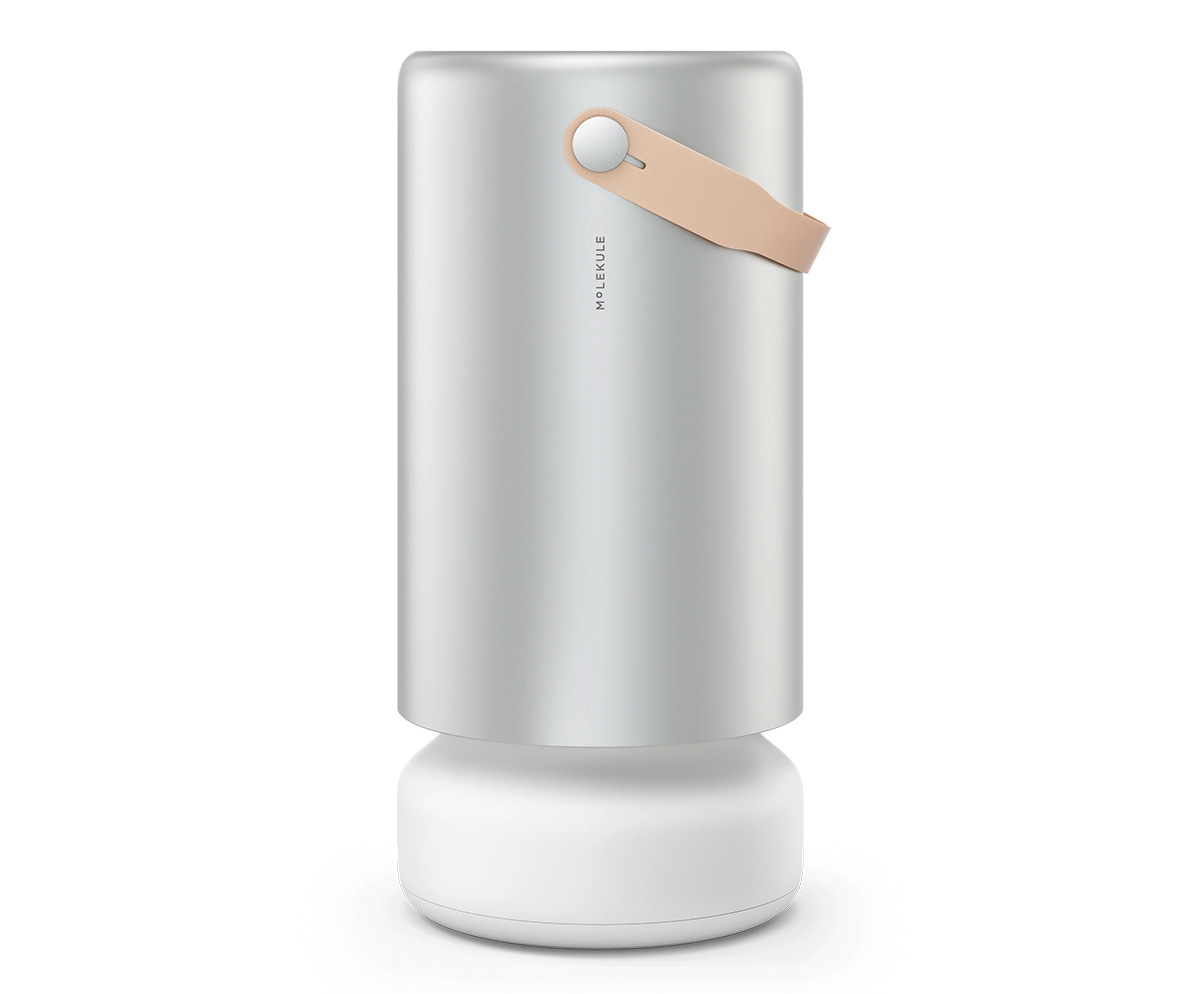
Cipriani Prosecco Gift Set
Effervescent with stone-fruit sweetness and a touch of Italian flair, the Cipriani Bellini & Prosecco gift set brings brunch-level glamour to any day of the week. The Bellini blends rich white-peach purée with sparkling wine, while the dry ’secco keeps things crisp and celebratory. Pop a bottle, pour a flute, and suddenly winter weeknights feel like a party – even with your pants off. $36, TotalWine.com
Woo(e)d Cologne
British GQ recently crowned Woo(e)d by ALTAIA the “Best Date Night Fragrance,” and honestly, they nailed it. Confident without being cocky – smoky gaïac and Atlas cedarwood grounds the room while supple leather and spicy cardamom do all the flirting – it’s a scent that lingers like good conversation and soft candlelight. Gift it to the one who always turns heads – or keep it for yourself and let them come to (and then on) you. $255, BeautyHabit.com
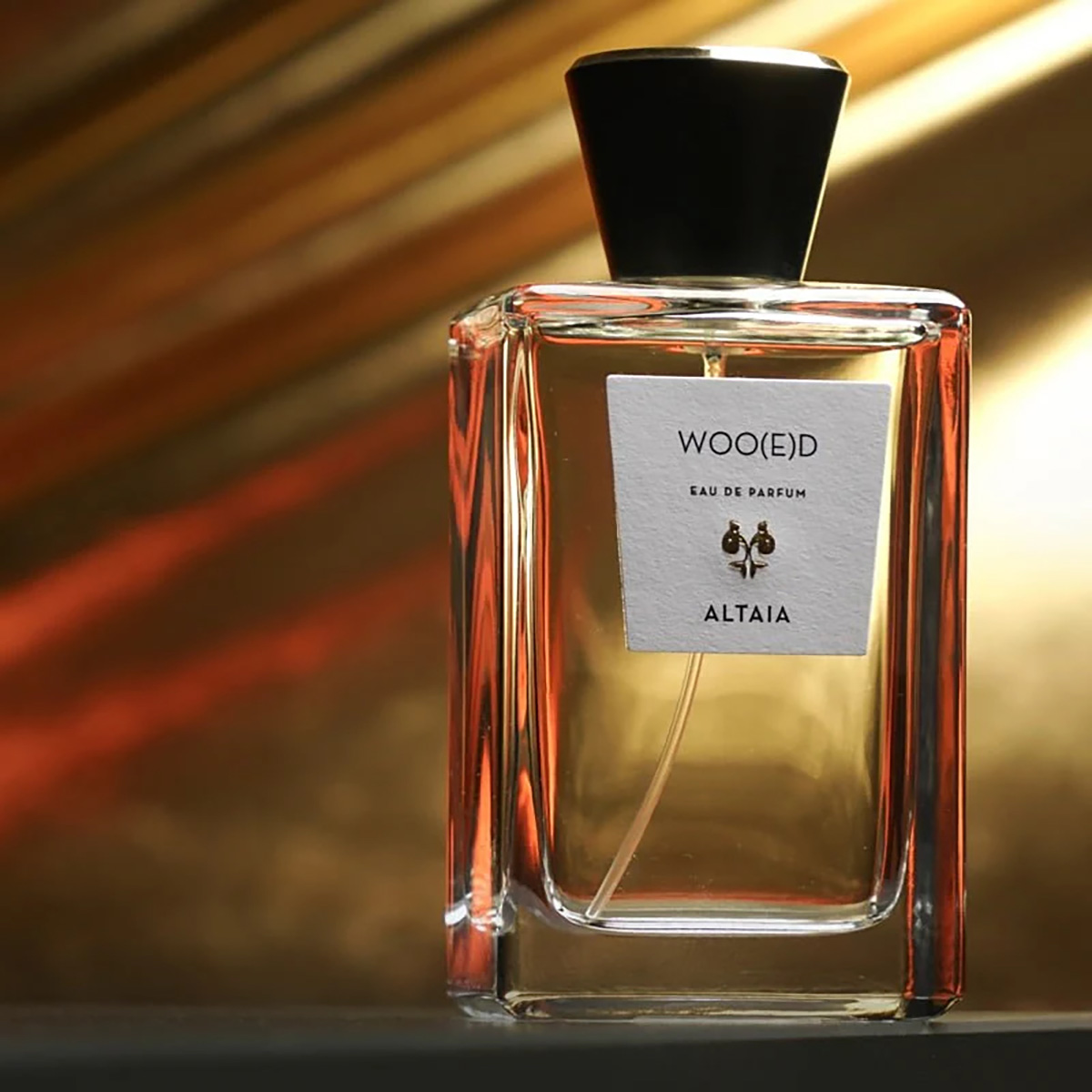
Lococo Cocoa Kit
Keep the run-of-the-mill mugs in the cabinet this Christmas and pull out Lococo’s handcrafted Oaxacan versions that demand you slow down and sip like it matters. Paired with a wooden scoop, rechargeable frother, and Lococo’s signature spice hot-chocolate blend (vegan, gluten-free, with adaptogenic mushrooms), this holiday kit turns Mexi-cocoa into a mini ritual you’ll look forward to. Perfect for anyone who loves a little indulgence with a side of ¡A huevo! energy.
Manta Sleep Mask
Total blackout, zero pressure on the eyes, and Bluetooth speakers built right into the straps, this ain’t your mama’s sleep mask — but it could be. The Manta SOUND sleep mask features C-shaped eye cups that block every hint of light while ultra-thin speakers deliver your favorite white noise, meditation, or late-night playlist straight to your ears. With 24-hour battery life, breathable fabric, and easy-to-adjust sound, it turns any bed (or airplane seat) into a five-star sleep suite. Perfect for anyone who treats shut-eye like an art form (or just wants to escape their roommate’s late-night bingin’ and/or bangin’). $159, MantaSleep.com

Shacklelock Necklace
Turn the industrial-chic vibe of a shackle into a sleek statement. Mi Tesoro’s platinum-plated stainless-steel necklace sits on an 18-inch wheat chain, featuring a shackle-style latch pendant that’s waterproof, tarnish-free, and totally fuss-les. Beyond style, it nods to a classic gesture in the queer leather community: replacing a traditional Master lock with something elegant to quietly signal belonging to someone special. Wear it solo for a minimalist edge or layer it like you mean it; either way this piece locks in both your look and your intentions. $90, MiTesoroJewelry.com
Parkside Flask Mojave Edition
Wine nights get a desert glow-up with Parkside’s limited-edition 750-milliliter all-in-one flask draped in sun-washed bronze and badland hues like sage, sand, and terracotta – with magnetic stemless tumblers that snap on for effortless shareability. It keeps your vino chilled for 24 hours, pours without drips (no tears for spilled rosé, please), and even lets you laser-engrave your own mantra or inside joke. Perfect for picnics, surprise rooftop clinks, or gifting to your favorite wine (or desert) rat. $149, HighCampFlasks.com
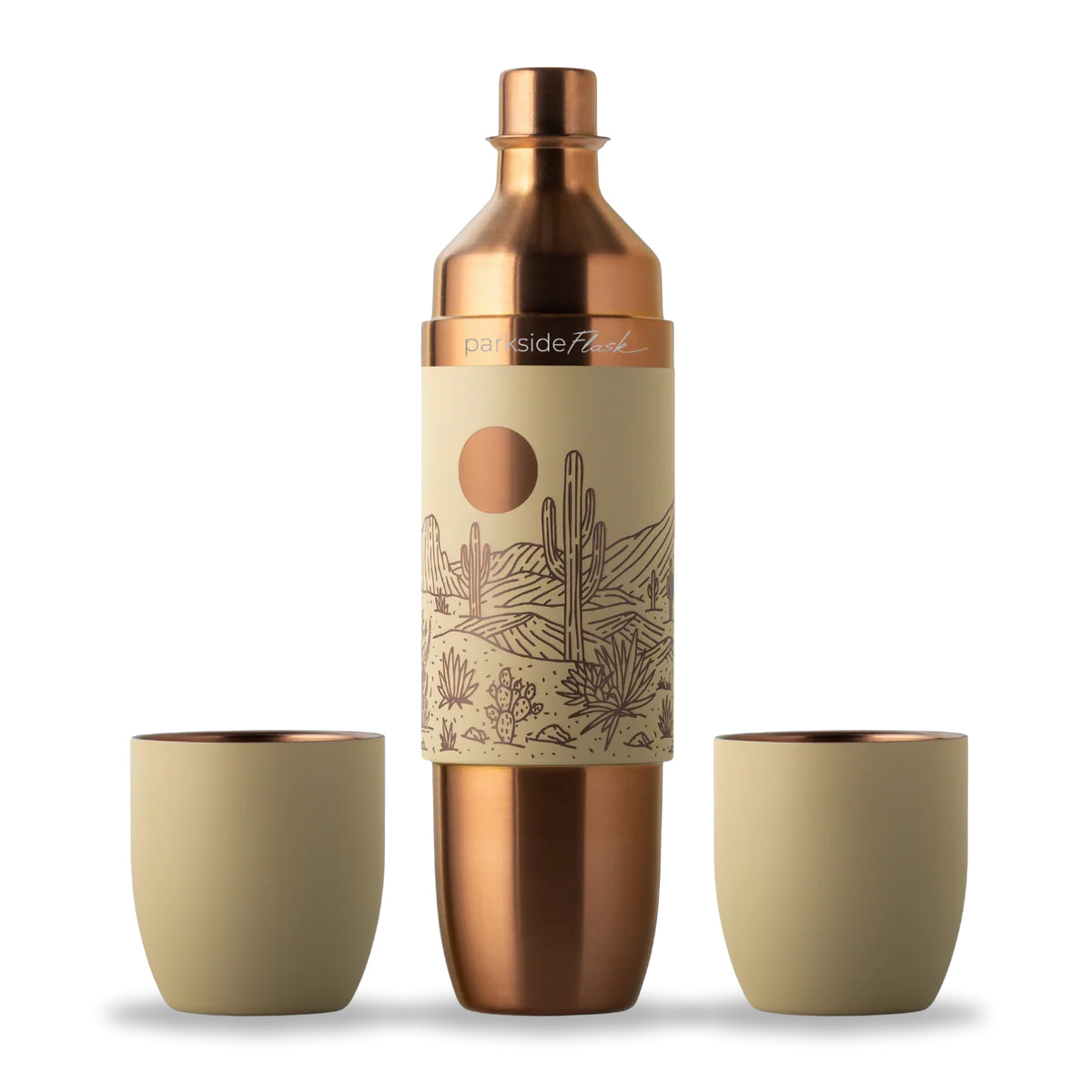
Mikey Rox is an award-winning journalist and LGBT lifestyle expert whose work has published in more than 100 outlets across the world. Connect with him on Instagram @mikeyroxtravels.
a&e features
Meet Mr. Christmas
Hallmark’s Jonathan Bennett on telling gay love stories for mainstream audiences
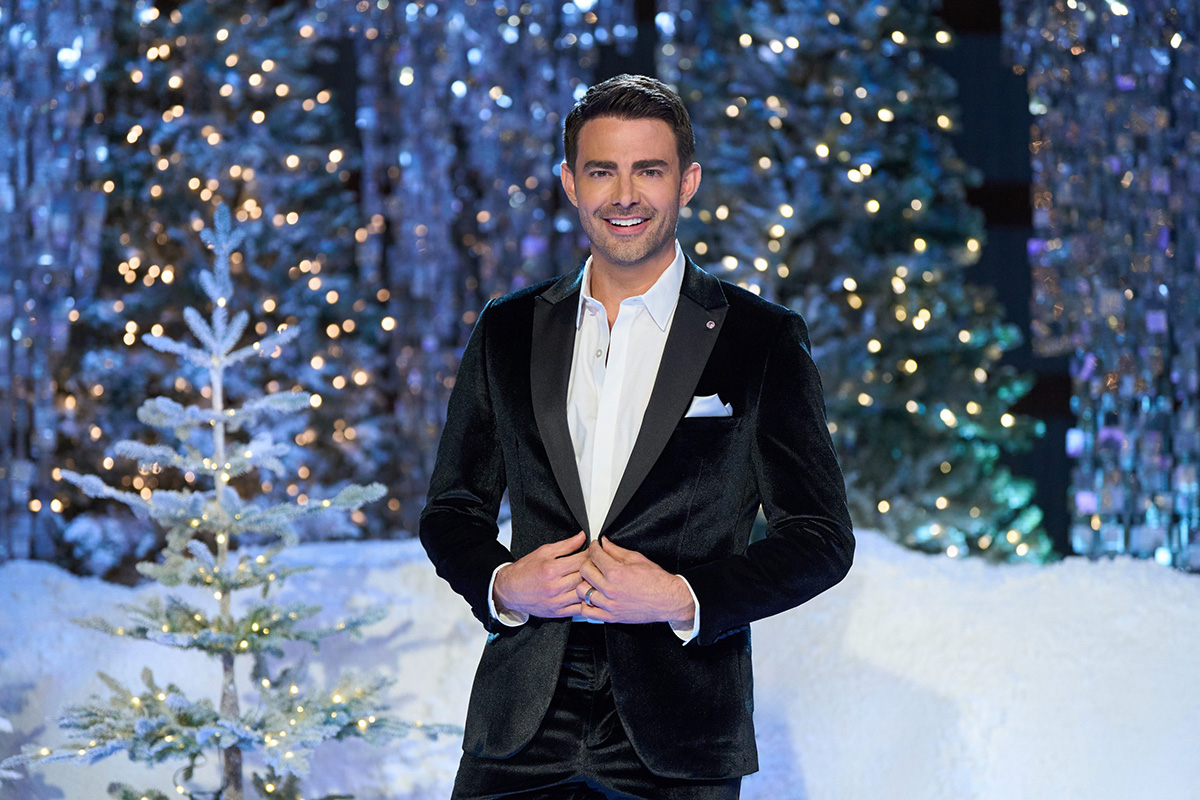
Jonathan Bennett believes there are two kinds of people in the world — those who love Hallmark movies and liars. And in Season 2 of Finding Mr. Christmas, which the Mean Girls star co-created with Ben Roy, Bennett is searching for Hallmark’s next leading man.
“It’s so fun for people because everyone in their life has someone they know that they think should be in Hallmark movies, right? The UPS driver, the barista at the coffee shop, the dentist,” Bennett says. “So we’re testing their acting abilities, we’re testing who they are, but we’re also looking for that star quality — the thing that makes them shine above everyone else. It’s almost something you can’t explain, but we know it when we see it.”
Season 2’s cast includes a former NFL player for the Green Bay Packers, a few actors, and a realtor. The 10 men compete in weekly festive-themed acting challenges, one of which included having to ride a horse and act out a scene with Alison Sweeney. The contestants were chosen from a crop of 360 potential men, and Bennett gives kudos to the show’s Emmy-nominated casting director, Lindsay Liles (The Bachelor, Bachelor in Paradise).
“She has a tough job because she has to find 10 guys that are going to be good reality television, but also have the talent to act, carry a scene, and lead a Hallmark movie eventually,” he says. To be the right fit for a Hallmark leading man, Bennett singles out five key characteristics: you have to be funny, charming, kind, have a sense of humor, and you have to do it all with a big heart.
Of course, Finding Mr. Christmas wouldn’t be Finding Mr. Christmas without its signature eye candy — something Bennett describes as “part of the job” for the contestants. “I can’t believe Hallmark let me get away with this. I dressed them as sexy reindeer and put them in harnesses attached to a cable 30 feet in the air, and they had to do a sexy reindeer photo shoot challenge,” he says with a laugh. “This season is just bigger and bolder than last. People are responding to not only all the craziness that we put them through, but also comparing and contrasting the guys in their acting scenes when we do them back-to-back.”
Season 1 winner Ezra Moreland’s career has been an early testament to the show’s success at finding rising talent. On seeing the show’s first winner flourish, Bennett says, “Now to watch him out in the world, just booking commercial after commercial and shining as an actor and a model, I think the show gave him the wings to do that. He learned so much about himself, and he took all that into his future auditions and casting. He just works nonstop. I’ve never seen an actor book more commercials and modeling gigs in my life.”
Bennett has been a star of plenty of Hallmark movies himself, including the GLAAD-award-winning The Groomsmen: Second Chances, which makes him a fitting host. Among those movies are 2020’s Christmas House, which featured the first same-sex kiss on the network and had a major impact on Bennett’s career as an openly gay man. “Hallmark’s been so great about supporting me in queer storytelling. But again, I don’t make gay movies for gay audiences. I make gay love stories for a broad audience, and that’s a huge difference, right? We’re not telling stories inside baseball that only the gay community will understand.”
He continues, “The backdrop of a Hallmark Christmas movie is very familiar to these people who watch. And so when you tell a gay love story, and you tell it no differently than a straight love story in that space, they’re able to understand. It’s able to change hearts and minds for people who might not have it in their lives.”
While Hallmark has become a major staple of Bennett’s career, he started off wanting to be a Broadway actor. And before the first season of Finding Mr. Christmas aired, Bennett took a break from TV to make his Broadway debut in Spamalot, replacing Michael Urie as Sir Robin and starring alongside Ethan Slater and Alex Brightman.
“That was my dream since I was five years old – then I booked a movie called Mean Girls, and everything kind of changes in your life. You no longer become a person pursuing Broadway, you become a part of pop culture,” Bennett recalls. “And to be honest, when I hit 40, I was like, ‘I’m probably never going to get to live that dream.’ And that’s okay, because I got to do other dreams and other things that were just as cool but different. So I honestly never thought it would happen.”
Bennett is still determined to make his way back on Broadway with the right role — he calls Spamalot the “best experience” of his life, after all — but he’s got another Hallmark show lined up with Murder Mystery House, which he co-created. The show was recently greenlit for development and intends to bring the Hallmark mystery movie to life. “It’s kind of like our version of The Traitors,” Bennett admits.
Looking back on both seasons, Bennett says that what makes Finding Mr. Christmas stand out in the overcrowded reality TV landscape is that everyone involved makes it with heart: “This isn’t a show where you’re going to watch people throw drinks in each other’s faces and get into big fights. The thing that has amazed me so much about this show, the more we’ve done it, is that every season, 10 guys come in as competitors, but they leave as a family and as brothers. That’s something you don’t get on any other network.”
Finding Mr. Christmas airs every Monday on Hallmark through December 20, with episodes available to stream on Hallmark+.



